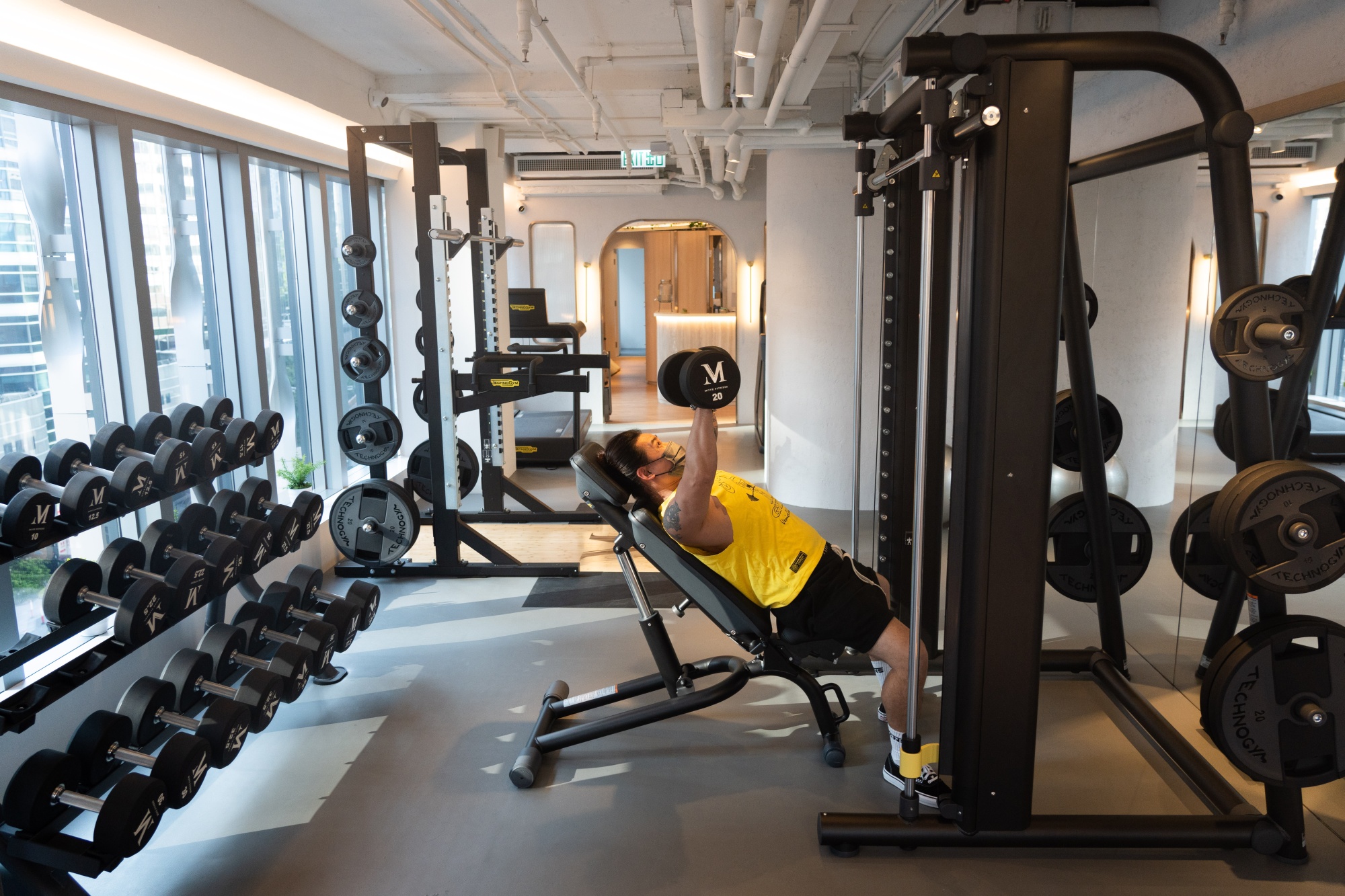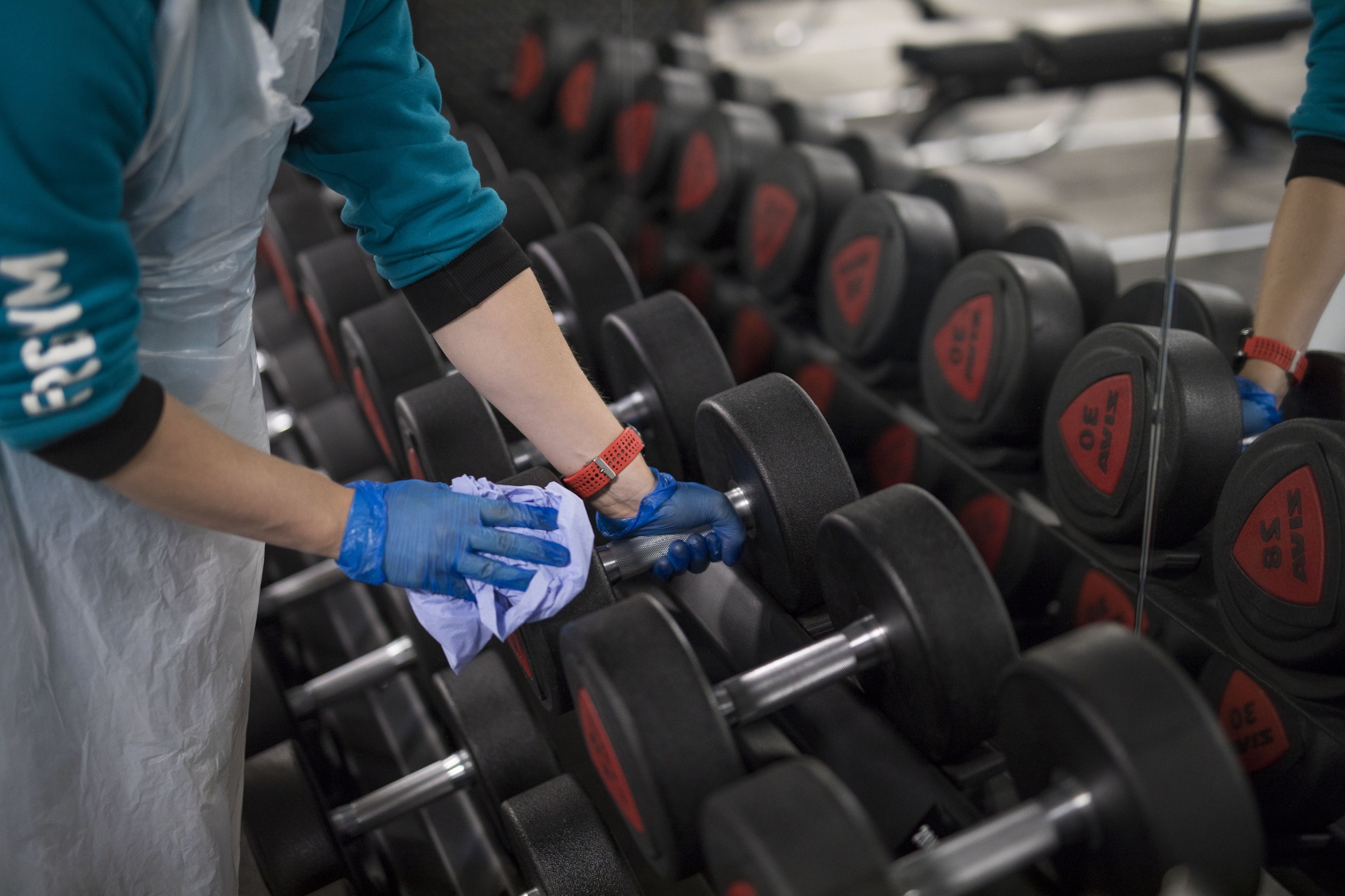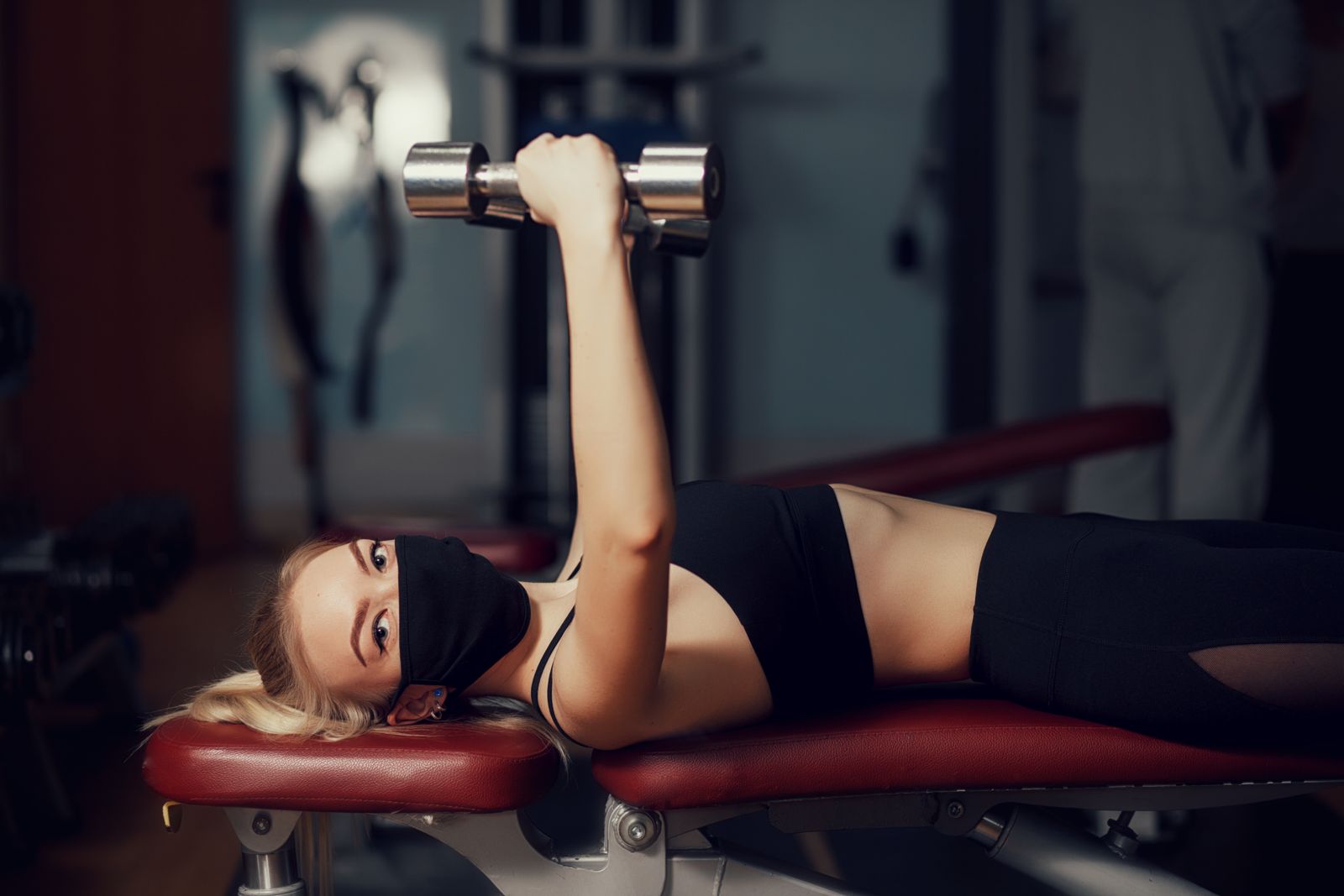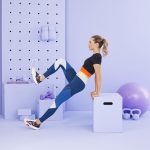COVID-19 has had an immense impact not just on the framework of our daily lives, but also on our mental health and well-being. With over 60% of American adults reporting unwanted weight gain during the COVID-19 pandemic and 48% reporting an increase in stress, it’s time for a return to healthy habits and a consistent fitness routine.
You may be ready to conquer a new fitness regimen, but are you ready to return to the gym? You may even be wondering: “Is the gym safe?”

QUESTIONS TO ASK YOUR GYM ABOUT COVID SAFETY
If you are planning on returning to your local fitness center, it is important to learn about the efforts they are taking to minimize COVID spread at the gym. Some important questions to ask include:
ARE THEY USING GOOD VENTILATION PRACTICES?
Many gyms and fitness studios have been advised to implement new ventilation standards to combat the spread of COVID-19. Good ventilation practices include:
- Holding class or hosting gym-goers in a large space with high ceilings
- Opening windows and doors on each side of the room to create cross ventilation
- Using air cleaners whenever possible
- Utilizing fans that draw air out of the room
When checking out a gym for positive ventilation practices, avoid a space that blows air towards you or simply recirculates the air already in the room. Fans or devices that recirculate stale air elevate the risk of spreading COVID and other illnesses.
ARE THEY ENFORCING SOCIAL DISTANCING?
The CDC continues to recommend social distancing in gyms and other public settings. Some doctors even recommend expanding that distance to 10 feet when surrounded by other exercising people.
Though social distancing is still ideal, many gyms and public places have relaxed or dropped their social distancing and mask requirements. Others have installed plexiglass shields between equipment or areas of the gym to minimize the spread of the virus. Contact your local gym to see what social distancing rules are in place or if they are utilizing physical barriers.
HOW ARE THEY CLEANING AND DISINFECTING THEIR SPACE?
It goes without saying that gym patrons should always sanitize their hands and clean their equipment before and after use. However, it’s important for gyms to step up their sanitation practices to meet the risks of COVID.
Ask your local gym how — and how often — they are wiping down equipment. It is helpful to know whether your gym provides antibacterial wipes and hand sanitizer to its patrons. Most importantly, inquire about the ways the gym is disinfecting the air. COVID is much more likely to be passed through the air you breathe versus the sweat on your equipment.

WHAT TYPE OF CLASSES ARE THEY HOLDING?
It is possible to pass COVID from person to person in any indoor class, but the risk is significantly elevated by high-intensity workouts.
Naturally, the amount of air you breathe in and out of your lungs rises when you take part in high-energy classes — like cardio, dance, or spin. Because of this, lower energy classes — such as pilates, yoga, or strength training — are much safer. Reach out to your local gym to see which type of classes are being held throughout the day and whether they are being held indoors or outdoors.
HOW MANY PEOPLE ARE ALLOWED IN?
Rules about capacity vary from state to state and, as America continues to reopen, many have been dropped. However, some gyms continue to maintain a limited capacity to help prevent a resurgence of the virus.
Experts continue to recommend social distancing in a gym setting. As a rule of thumb, look for a class size that allows you to maintain ample distance between you and your gym-mates. Ask your local gym about their current capacity or class sizes and how they enforce them.
ARE MASKS REQUIRED?
In many states, masks are no longer required. However, it is still recommended that you wear a mask while working out in an enclosed space. Find out whether your gym has a mask mandate in place and whether they enforce it — many gyms and studios do not.

DO THEY HAVE A VACCINATION POLICY?
Some of the fears of walking into a public space are minimized when you know everyone around you is vaccinated against COVID. However, every gym has its own vaccination policy. Some have created a vaccination passport system that requires patrons to check in beforehand and provide proof of immunization. Others simply ask that non-vaccinated folks wear a mask and allow vaccinated gym-goers to work out maskless.
Ask ahead of time about your gym’s vaccination policy and whether it is enforced. Keep in mind that it is impossible to tell who is vaccinated and who is simply opting to go without a mask in an honor system setting.
ARE THEY COMMITTED TO COVID SAFETY PRECAUTIONS?
Health and fitness organizations around the world have introduced initiatives that encourage gyms to make a public commitment to safety. For example, The International Health, Racquet, and Sportsclub Association created the IHRSA Active & Safe Commitment. The program includes a pledge that upholds:
- Following social distancing and cleaning measures
- Creating safety protocols
- Maintaining contact tracing
Check your gym’s website for a list of safety protocols or pledge to public safety. If you can’t locate one online, reach out to the gym to learn more about their commitment to keeping gym-goers safe.
HOW TO STAY SAFE AT THE GYM
Once you’ve assessed the safety of your gym, it’s up to you to decide whether you feel comfortable working out there. If you do opt to return to your gym in person, there are steps you can take to minimize the risk of COVID-19:
PREPARE BEFORE YOU LEAVE THE HOUSE
The key to staying safe is to prepare yourself before heading to the gym. While gyms are reopening, there may be a long time yet before you can casually run out the door to a weight lifting session. Important preparation steps include:
- Stay up to date on vaccines. The best line of defense against COVID-19 is the vaccine. If you are planning on regularly heading to the gym or other public places, the vaccine is the most effective way to prevent the spread of COVID-19.
- Wear or pack a mask. While vaccinated people may not be required to wear a mask, it is always best to pack one in your gym bag — especially if you’re not sure about your studio’s policy or the ventilation in the gym.
- Bring hand sanitizer. Be sure to pack your own travel hand sanitizer in case the gym does not provide it in key locations. Even if there is sanitizer offered, having your own gives you the freedom to disinfect after touching any surface.
- Pack anti-bacterial wipes. Similarly, it is a great idea to pack your own anti-bacterial wipes. Not all gyms provide them, and you’ll want to wipe down every piece of equipment before and after you use it.
- Bring water. Don’t plan on using community drinking fountains. Instead, bring your own bottle of water and refill at a hands-free station when needed.
- Check in with yourself. Before you leave the house, consider how you’re feeling. If you are feeling feverish, sick, or run-down, skip the public gym.

PLAN TO WORK OUT AT A QUIET TIME
Whenever possible, try to choose a class or plan your workout before or after the rush. Peak times at the gym include early mornings, lunch break hours, and immediately after work. Instead, try to sneak away for a late morning, late afternoon, or late night gym session to avoid congestion.
CHECK IN AT YOUR GYM
If your gym utilizes an online reservation or hands-free check-in system, use it! A check-in can save you time and ensures that you will be visiting a gym with a limited capacity.
SOCIAL DISTANCE
Whether or not your gym requires it, try to stay at least six feet away from others to minimize the risk of spreading illness. Be considerate when waiting for others to finish reps on a piece of equipment by giving them a six-foot space rather than crowding racks or cardio equipment.
SANITIZE
When using gym equipment:
- Wipe down all surfaces with an anti-bacterial wipe before and after using
- Wash your hands with soap and water or use hand sanitizer after touching any surfaces or equipment
PICK A LOW-INTENSITY WORKOUT
To minimize the amount of air you’re bringing into your lungs per minute, choose a low-intensity workout. Similarly, give ample distance to patrons who are engaged in high-intensity workouts like running on a track or treadmill.
HEAD OUTDOORS WHEN POSSIBLE
If your gym offers outdoor classes or workout spaces, use them. Outdoor gym space offers a safer alternative to an enclosed space with recycled air. Beyond safety, outdoor workouts provide a great way to get fresh air and improve your mood.
AVOID PHYSICAL CONTACT
Traditionally, gyms are a place to build community and friendships. While it can be tempting to share a friendly high-five, elbow bump, or hug, skip physical contact whenever possible.
FOLLOW GYM RULES
Chances are, your gym has rules in place to protect your health in their showers, locker rooms, and other facilities. Be aware of all signage and follow the protocols in place. Be ready to wear a mask when asked, whether you are vaccinated or not.


